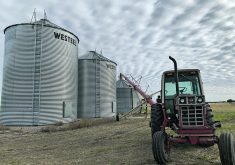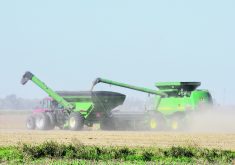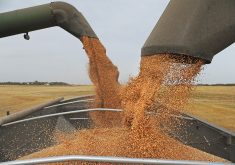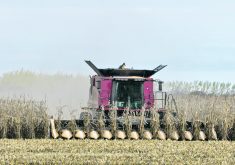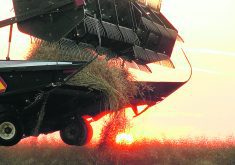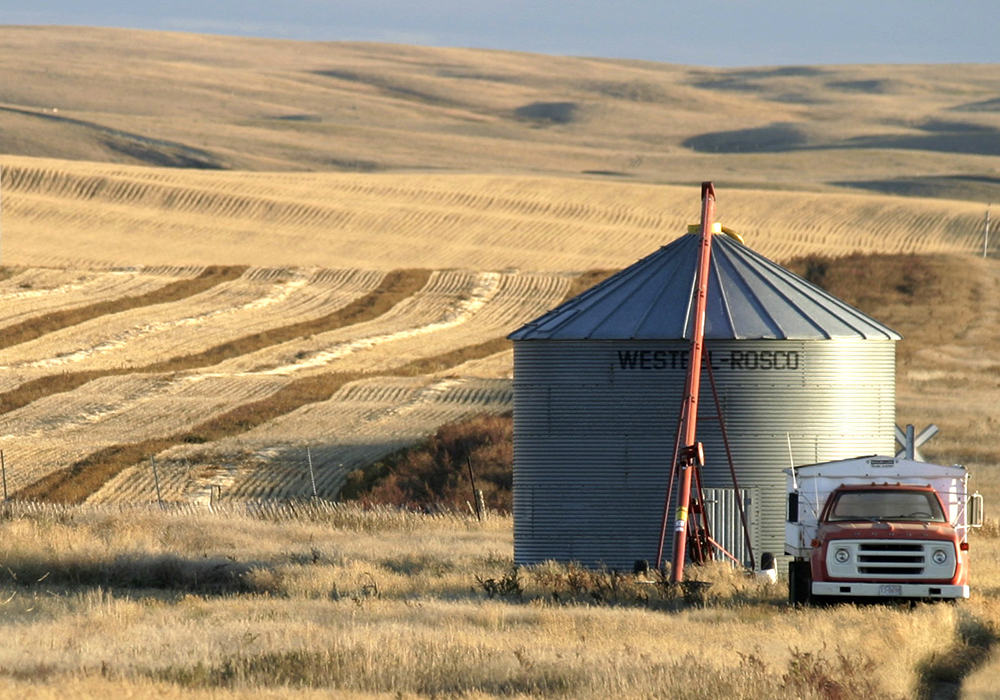Manitoba
SOUTHWEST
Isolated rain showers and severe thunderstorms plagued parts of the southwest and north of Highway 45. Minor frost also occurred.
Pastures improved with recent rains, but frost and cool temperatures are limiting the expected growth. Dugouts remain at capacity. Limited harvest progress was made.
Pea yields are average with some fields below average due to early season root rot. Winter yields range from 45 to 65 bushels per acre with moderate fusarium levels. Spring wheat yields are 55 to 65 bu. per acre with low fusarium levels.
Read Also
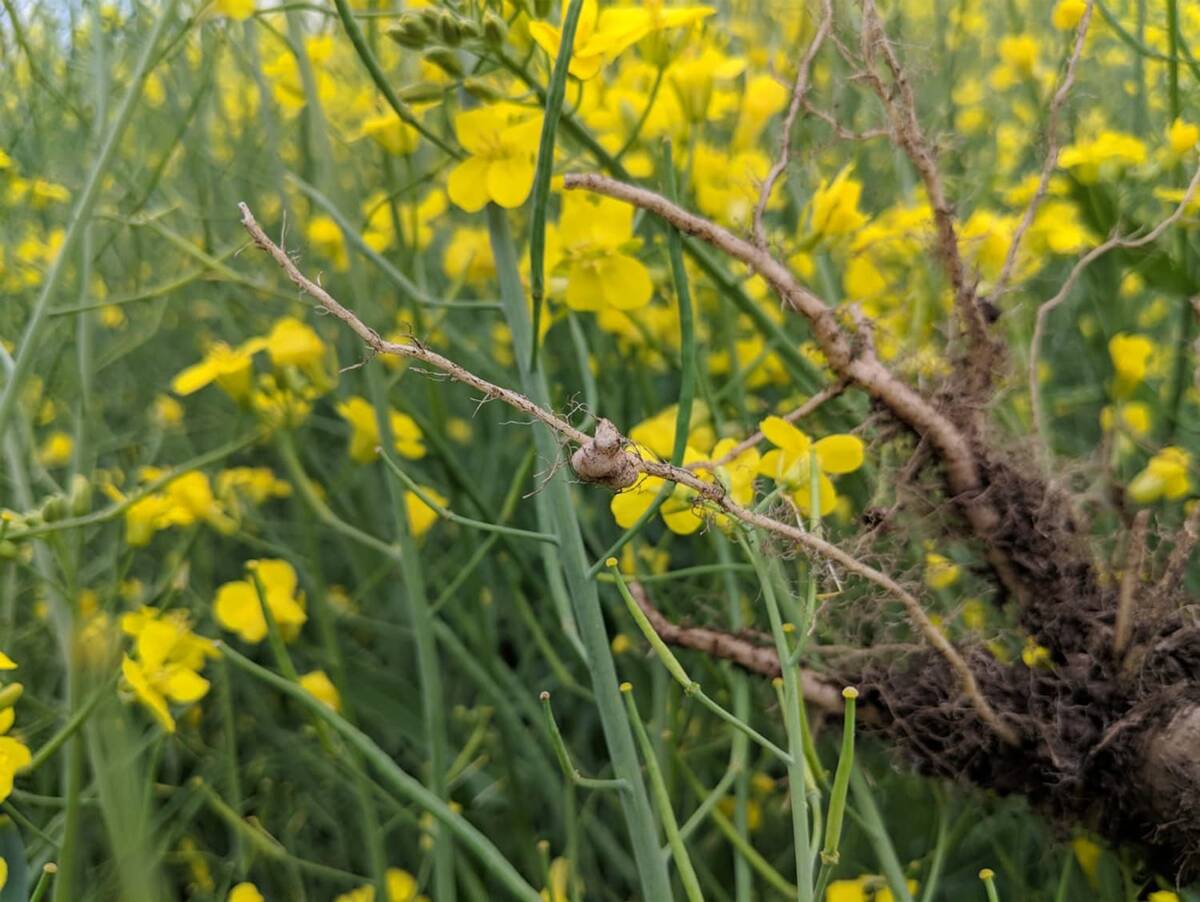
Going beyond “Resistant” on crop seed labels
Variety resistance is getting more specific on crop disease pathogens, but that information must be conveyed in a way that actually helps producers make rotation decisions.
Early canola yields range 40 to 50 bu. per acre. Producers are swathing late canola fields to minimize damage from potential frost.
Soybeans have advanced little because of cool weather conditions.
Corn and sunflowers need heat.
Winter wheat seeding is minimal.
Foxtail barley is a major weed issue and present on unseeded areas or moisture stressed areas.
NORTHWEST
Wind, rain, frost and good harvest weather came to parts of the region. The highest recorded rainfall was in the southern area. Frost was recorded at several locations.
Some combining occurred. Much of the crop has tested tough and is being aerated.
More than 90 percent of the wheat crop is ripe, but harvest varies from less than five percent to 70 percent.
Sixty percent of the canola crop is swathed and less than five percent combined. Most of the soybean crop is podded. Harvest of the pea crop is complete with average yields. Little to no seeding of winter wheat and fall rye has occurred.
Rain has stopped most harvest operations in the southwest.
CENTRAL
Weather slowed the harvest last week. Frost hit the western part of the region.
Cereal grain was harvested tough to damp and required aeration or drying.
Winter wheat harvest is complete. Yields average 50 to 70 bu. per acre. High levels of fusarium have damaged the quality. Fall rye yields are 50 to 60 bu. per acre.
Barley yields in the east are 70 to 100 bu. per acre in good quality. Some is downgraded because of mildew and sprouting.
Spring wheat quality is good and early yields are 45 to 80 bu. per acre.
Oat yields are 90 to 140 bu. per acre with good weight.
Canola swathing continues except for the latest seeded crops. Yields are 40 to 45 bu. per acre and higher.
Soybean fields are seeing leaf colour change in most fields. Leaf spotting, brown spot, bacterial blight, root rot, and downy mildew have been found.
Large seed sizes for kidney and cranberry beans have been reported. Pick is low. Corn is variable with most in the dent stage. Sunflowers are mostly at R7 to R8. Rust and sclerotinia head rot are reported in sunflowers.
EASTERN
Light showers occurred throughout the cooler region. Topsoil moisture level on most of the annual cropland is adequate. Some areas received light frosts.
Harvest was slow, with most cereals harvested tough. Some canola is being swathed to minimize frost-induced pod shelling.
Spring wheat yields are averaging 60 to 80 bu. per acre. Canola averages 30 to 50 bu. per acre. Soybeans are in the R7 stage with leaves dropping and pods beginning to turn. Corn is in the dent stage. Sunflowers are in the R7 stage with the back of the head starting to turn yellow.
Winter wheat seeding is beginning. More seeding will occur this week as the canola harvest continues and stubble fields become available.
INTERLAKE
Scattered showers occurred throughout the region. Frost was reported.
Harvest is around 40 percent complete.
Spring cereals continue to be harvested tough. Spring wheat grades are No. 1 to 3 because of mildew, fusarium and sprouting.
Wheat yields are 45 to 65 bu. per acre, oats are 80 to 110 bu. per acre, barley 60 to 60 bu. per acre and canola 25 to 45 bu. per acre.
Desiccating is beginning on alfalfa seed fields.
Soybeans are starting to show colour change and leaf drop.
Winter wheat seeding is minimal because of the late stages of canola and delayed harvest.
Many hayfields and cropland are still too wet for equipment.
Saskatchewan
SOUTH
Good weather has allowed some harvest progress. However, many operations were still at a standstill.
Thirty-one percent of the crop is combined and 35 percent is swathed or ready to straight cut.
Average yields are being reported, but quality remains an issue because of sprouting, bleaching and disease damage.
Small amounts of rain fell in most of the region. Areas such as Moose Jaw reported 21 millimetres. The Cadillac area has received 583 mm since April 1.
Topsoil moisture conditions on cropland are adequate. Hayland and pasture moisture is adequate, but many areas are wet and equipment is getting stuck.
Localized flooding, hail, wind and waterfowl caused damage. Frost was also reported. Many late seeded crops and alfalfa fields suffered damage. Some immature soybean and corn fields were severely damaged.
Producers report they are able to seed winter cereals, but many will not be able to seed the intended acres because of the late harvest and weather.
CENTRAL
Harvest made slow progress because of wet fields and scattered showers. Many crops are coming off tough.
Around 40 percent is swathed or ready to be straight cut.
Average yields are being reported, although there are quality concerns. Bleaching, sprouting, disease and insects are causing damage. There are reports of higher-than-normal green counts in some canola crops. Lower-than-expected yields are also being reported.
Localized flooding and strong winds have lodged many crops. Bethune reported 21 mm of rainfall. Since April 1, the Foam Lake area has reported 725 mm.
Topsoil moisture conditions on cropland are adequate. Hayland and pasture moisture is also adequate with some areas reporting short conditions.
Many areas are reporting low temperatures and damaged crops that are behind normal development. Wildlife and waterfowl have caused along with the frost. The low temperatures damaged later-seeded and immature crops.
Farm equipment isn’t supported on the wet fields, and many combines are getting stuck.
NORTH
Harvest continues at a steady pace. The dry weather conditions have allowed roughly 55 percent of the crop be swathed or ready to straight cut.
Yields have been reported as average, but many reports of seed damage are coming in. Sprouting, bleaching, wheat midge and frost are the main culprits.
The Arborfield area reported 12 mm of rain while the Hafford area has received 490 mm since April 1. Topsoil moisture conditions are highly adequate, as are hayland and pasture topsoil moisture conditions.
Frost caused the most damage with later-seeded crops. Wind and waterfowl also contributed. Much of the soybean crop was damaged.
Alberta
SOUTH
Harvest was postponed by cool weather, especially rain and snow.
The area northwest of Calgary received heavy rain and snow.
However, better weather has allowed harvesting to resume.
About 30 percent of cereals are in the bin and roughly 20 percent of canola is still standing. Fifty percent is swathed and about 30 percent is in the bin.
About half of spring wheat is still standing. Dry peas are slightly less than 90 percent harvested.
Tame hay and pasture rates about 40 percent in good to excellent condition.
Sub-soil moisture conditions are rated at 75 percent good to excellent.
CENTRAL
Cool weather temporarily halted harvest, but recent warm weather has helped it resume.
Certain areas are reporting loss in crop quality, especially with wheat.
More than 60 percent of spring wheat is still standing. Dry peas are almost 85 percent harvested.
Pasture and tame hay remains at 60 percent in good to excellent condition. Sub-surface moisture conditions are rated about 75 good to excellent.
NORTHEAST
Harvest operations have resumed, despite the cool weather, rain, and snow. Frost and snow have reduced cereal grades.
Roughly 20 percent of the crop has been combined. About 10 percent of canola is still standing.
About 70 percent is swathed and 20 percent is in the bin.
Nearly 70 percent of wheat is still standing and dry peas are 95 percent harvested.
Tame hay is reported as 40 percent good to excellent condition. Pasture conditions are 40 percent.
Sub-surface moisture dropped to 75 percent good to excellent.
NORTHWEST
Showers and snow delayed harvest in most parts of the region. Warmer conditions have allowed producers to resume harvesting.
About 10 percent of crops are in the bin.
Only about five percent of canola has been combined, which leaves 85 percent in swath and about 10 percent standing.
Roughly 75 percent of spring wheat is still standing and dry peas are 95 percent harvested.
Conditions of pasture and tame hay are declining with reports of 10 percent in good to excellent condition.
Sub-surface soil moisture ratings remain low, with only 40 percent in good to excellent condition.
PEACE
More cool weather temporarily delayed harvest across the region. Crop quality loss because of frost and snow has been reported.
Around 50 percent of crops are in the bin. About 10 percent of canola is still standing with 45 percent swathed and 45 percent combined.
About 35 percent of spring wheat is still standing. Dry peas are 95 percent harvested.
Pasture and tame hay remain unchanged from last week with a rating of 35 percent good to excellent.
Sub-surface moisture is rated at 35 percent good to excellent.




